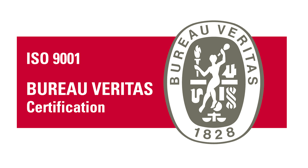Article
Environmental Protection and Counterfeit Goods
Or how to reconcile environmental protection and eradication of counterfeit goods?
Environmental protection is today a major concern involving everyone and especially product manufacturers, importers and distributors as rights owners.
In this regard, a recent French bill on combating waste and the circular economy seeks to require producers, importers and distributors of new non-food products to reuse or recycle their unsold goods.
Does this requirement apply to non-compliant products, i.e. products that do not comply with safety or other regulatory requirements? The bill is unclear on this point and, furthermore, it does not contain any provisions on counterfeit goods.
The question therefore arises of whether counterfeit goods, which are non-compliant by definition, should be expressly excluded from the scope of the bill, and their reuse or recycling therefore prohibited.
If this is the case, what do we do with counterfeit goods?
Generally, counterfeit goods are disposed of by open-air incineration, grinding, crushing, burial in a landfill or donation, these methods varying according to the nature of the goods to be destroyed.
We now know that open-air incineration is the most inappropriate way of discarding goods that infringe property rights and could have devastating long-term effects on the environment and health. Yet, this process is frequently used and is even generally preferred at events organized to raise public awareness of the counterfeiting issue.
Crushing or shredding, and containment, in order to avoid all impact on the environment or public health, would be more preferable methods.
But once again, the issue boils down to volume and money.
The eradication of counterfeit goods is indeed becoming increasingly costly and technically complex, as governments and rights owners must strive to implement measures that comply with the TRIPS agreement, while also integrating the need to mitigate environmental impacts and meet the requirements of other domestic legislation.
Implementing such compliant methods and procedures, while reducing environmental impact and protecting consumers is currently a real challenge for governments and rights owners.
In this regard, a resolution of the International Trademark Association (INTA) of 7 March 2005 outlined the members’ expectations concerning the disposal of counterfeit goods:
- "Therefore, in order to ensure a more effective customs enforcement regime against cross-border trafficking of counterfeit goods, the ACEC recommends that the governments […] should take appropriate steps to reduce or eliminate the burdens on trademark owners of suffering costs of storage and destruction of counterfeit goods.
- Governments should also take appropriate steps to ensure that all counterfeit goods are compulsorily destroyed, definitively removed from channels of commerce, or disposed of with the rights holders’ consent where there is no health and safety risk".
The French government has so far only considered the destruction solution, by setting, since January 2019, the rates applicable for the storage and destruction of counterfeit goods payable by rights owners.
Thus, unlike our neighbors in Belgium and the Netherlands, France has yet to begin investigating a recycling solution.
However, more economical and environmentally-friendly solutions do exist.
At the fifth session of the WIPO Advisory Committee on Enforcement (ACE), Mr. Ronald Brohm, SNB-REACT Netherlands, recalled the situation concerning the costs of storing and destroying counterfeit goods:
- “Storage and destruction of counterfeit goods have become a major issue in a substantial number of countries. Warehouses pile out and the waste of resources is tremendous and at the end of the day most costly”.
He also said that SNB-REACT (a private organization financed by member companies, protecting and enforcing intellectual property rights) had managed to build in the Netherlands a smoothly functioning storage and destruction system which is to the satisfaction of rights owners, law enforcement and even shippers, and carriers stuck with counterfeit goods. It also created jobs specifically for the less fortunate members of the public. The model of this facility proved to be extremely successful and it could certainly serve as an inspiration for other organizations or even governments faced with similar situations.
The SNB-REACT maintains warehouses and containers to which the counterfeit goods are shipped immediately after being identified as fake. The transport to the SNB-REACT facilities is managed by the shippers/carriers. SNB-REACT facilities are under customs surveillance just like the destruction of the goods are organized and paid by SNB-REACT. Considering environmental concerns, most goods are first dismantled at workshops offering employment to a large number of physically disabled employees. The useful raw materials are officered to the recycling industry for further processing again providing a host of job opportunities. In this way, a very small part of the costs is earned back from recycling, but a great deal is achieved to prevent environmental waste by simply burning the counterfeit products and, in addition, the concept is also in the societal interest.
The transformation of counterfeit shoe parts into compounds for use in synthetic sport surfaces is just one example.
The Dutch system implemented by SNB-React works well and other initiatives for processing counterfeit goods can also be mentioned.
The Southwark Trading Standards Service (UK) , which traditionally incinerated counterfeit goods, has adopted new processes after consulting with rights owners. Below is a non-exhaustive list of these new processes:
- Shoes and garments are now gathered by a registered non-profit organization “His Church” which removes the labels from the products and exports them for humanitarian purposes. This organization has signed an agreement with the UK Federation against Copyright Theft (FACT) which has officially recognized the right for the organization to remove labels from counterfeit goods and to re-label them with its own charity brand: “His”. The clothes are then exported for humanitarian purposes.
- Fake handbags or wallets, as well as counterfeit DVDs, are given to the Police for the training of detector dogs.
- DVDs, CDs and other plastic products are ground and used in the manufacturing of pens, pencil holders and bindings.
- Fake batteries are recycled safely and in an environmentally-friendly way by the local waste-disposal service.
That said, many rights owners are of the opinion that donating counterfeit goods for humanitarian purposes is a sensitive question, and most are against it. While this objection is justified, they should not overlook the positive social impacts of this kind of practice, and the adoption of standards governing relabeling could be considered.
There remains the tricky question of hazardous goods, such as agrochemical products (pesticides and insecticides), mercury-containing electronic goods, alcohol, pharmaceutical products, electrical appliances, cigarettes, and so on.
To conclude, storage and disposal costs are a source of major concern for governments and rights owners. The length of storage and the costs incurred as a result of the increasingly technical and complex requirements that must be met for the destruction of often high volumes of counterfeit goods weigh heavily on rights owners' budgets.
However, we must bear in mind that the real responsibility lies with the infringer, or with the dishonest merchant or importer. Civil, criminal and administrative measures must reduce these costs when the offender can be identified, which is unfortunately seldom the case. In this regard, judicial procedures must not only be rapid, but they must also provide compensation for governments and rights owners for the expenses incurred.
In the USA, all storage and destruction costs incurred for counterfeit products are paid by the Treasury Forfeiture Fund out of seized proceeds of criminal activity.
This example could serve as inspiration for our governments in Europe.
As we can see, this is a tricky issue which definitely merits more attention.
1 Presented to the French Council of Ministers on 10 July 2019 and passed at first reading in the Senate on 30 September 2019
2 Articles 46, 59 and 61 of the TRIPS agreement provide the international legal framework for procedures adopted with a view to disposing of goods infringing IP rights.
3 French Decree of 11 December 2018 establishing the methods of calculating costs of storage, handling, transportation and destruction of suspected counterfeit goods. (See JORF no. 0295 of 21 December 2018, no. 72)
4 See our newsletter no. 7, March 2019
5 4 November 2009: https://www.wipo.int/edocs/mdocs/enforcement/en/wipo_ace_5/wipo_ace_5_7.pdf
7 https://www.southwark.gov.uk/business/trading-standards-and-food-safety/anti-counterfeiting















